American Children's Family Structure: Two Biological Parent Families
Family Profile No. 15, 2017
Author: Kasey J. Eickmeyer
Over the last 25 years, changes in the living arrangements of children have been well documented, with growth in single parenthood and stepfamilies. In this profile series, we document recent changes in children's family structure using data from the 2010 and 2016 Current Population Survey (CPS). Consistent with prior work (Manning, Brown, & Stykes, 2014), American children's family structure appears stable with essentially no change over the past six years (Figure 1 ). This profile is the first in a series documenting the family structure of American children and describes how the characteristics of children's parents and family life differ based on marital status of two biological parent families.
- Three-fifths (62%) of children lived with two biological parents (Figure 1 ). The vast majority lived with married rather than cohabiting parents.
Figure 1. Family Structure of Minor Children, 2010 & 2016
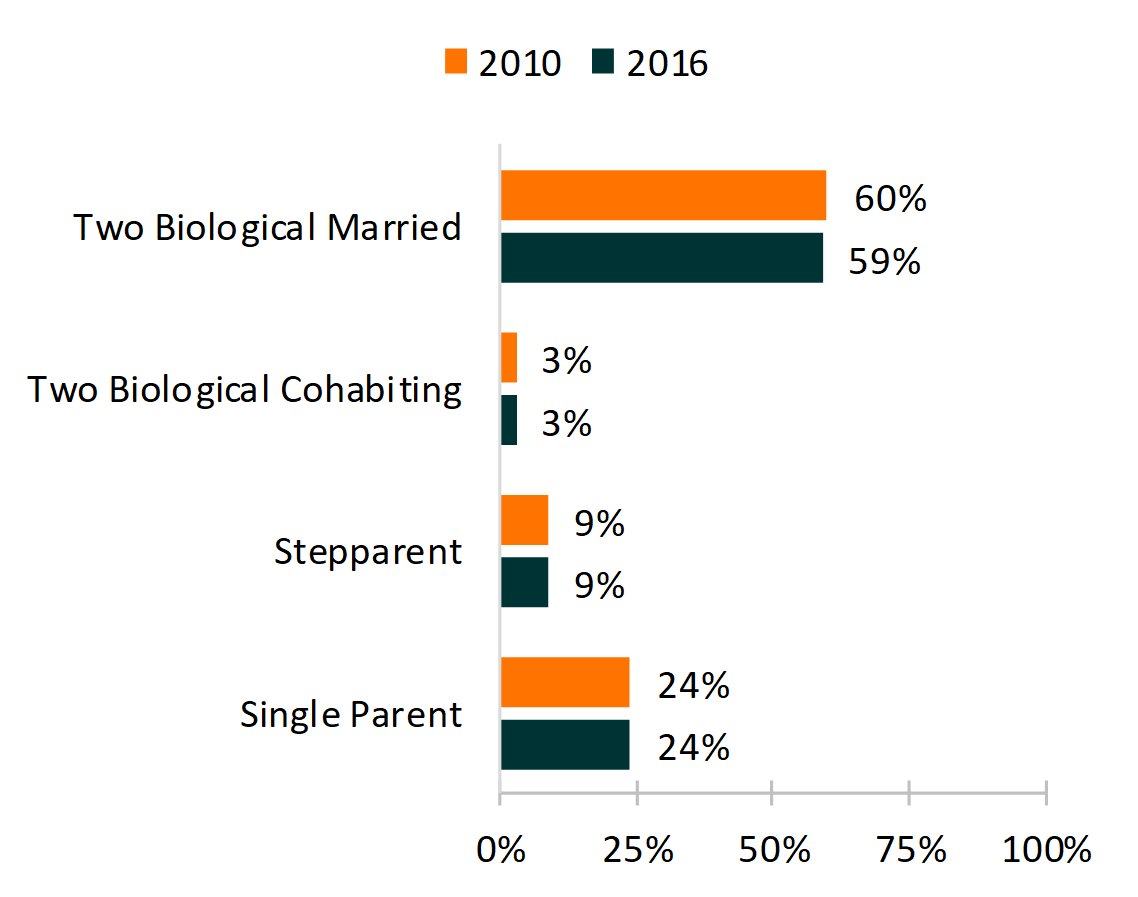
Parental Educational Attainment
- Parental educational attainment was much higher among married versus cohabiting two biological parent families in 2016.
- About half (53%) of children in married biological parent families had a parent with at least a bachelor's degree. This level is over three times that of children living with cohabiting biological parents at 15%.
Figure 2. Variation in Parental Educational Attainment Among Children in Two Biological Parent Families, 2016
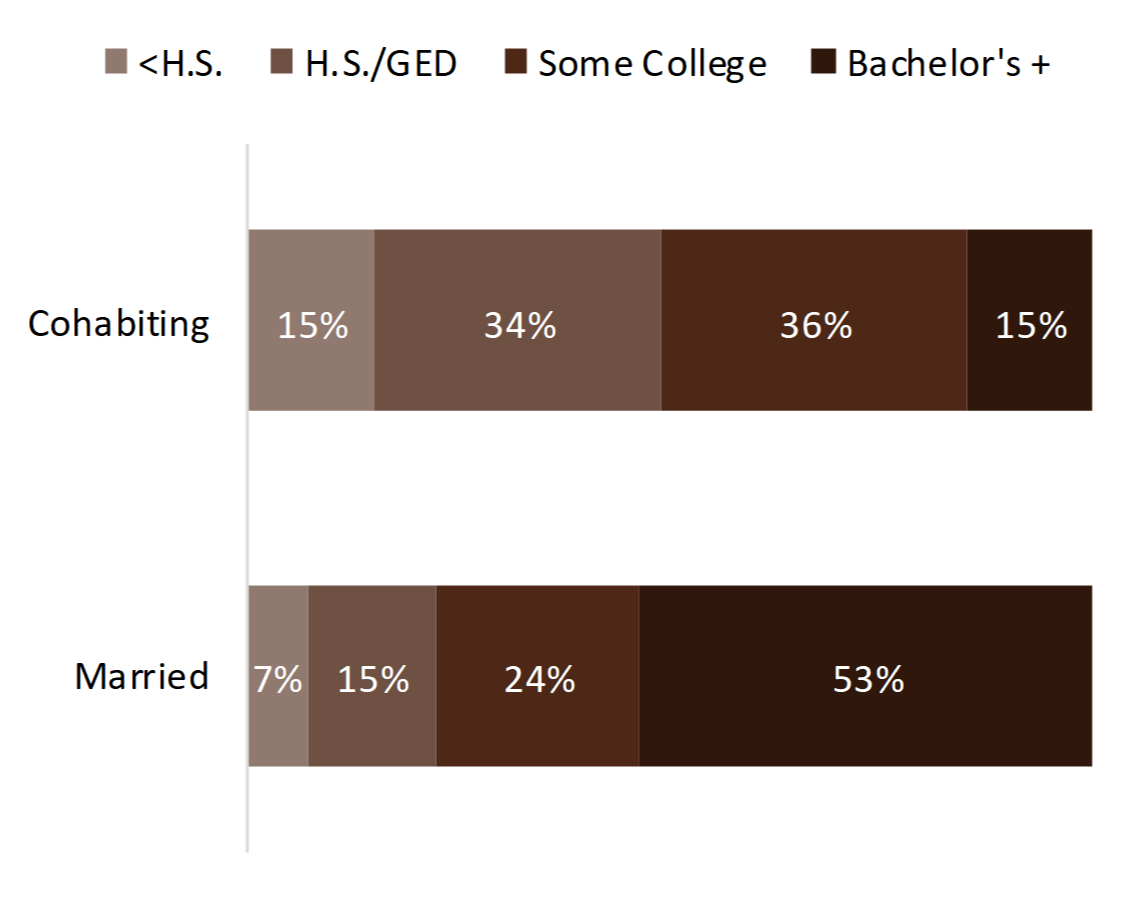
Racial & Ethnic Composition
- Fewer children living in married biological parent families were Black (7%) or Hispanic (23%) than children in cohabiting parent families (14% and 31%, respectively).
- Greater shares of children in married biological parent families were White (59%) or Asian (7%) than children living with cohabiting biological parents (46% and 3%, respectively).
Figure 3. Variation in Racial & Ethnic Composition Among Children in Two Biological Parent Families, 2016
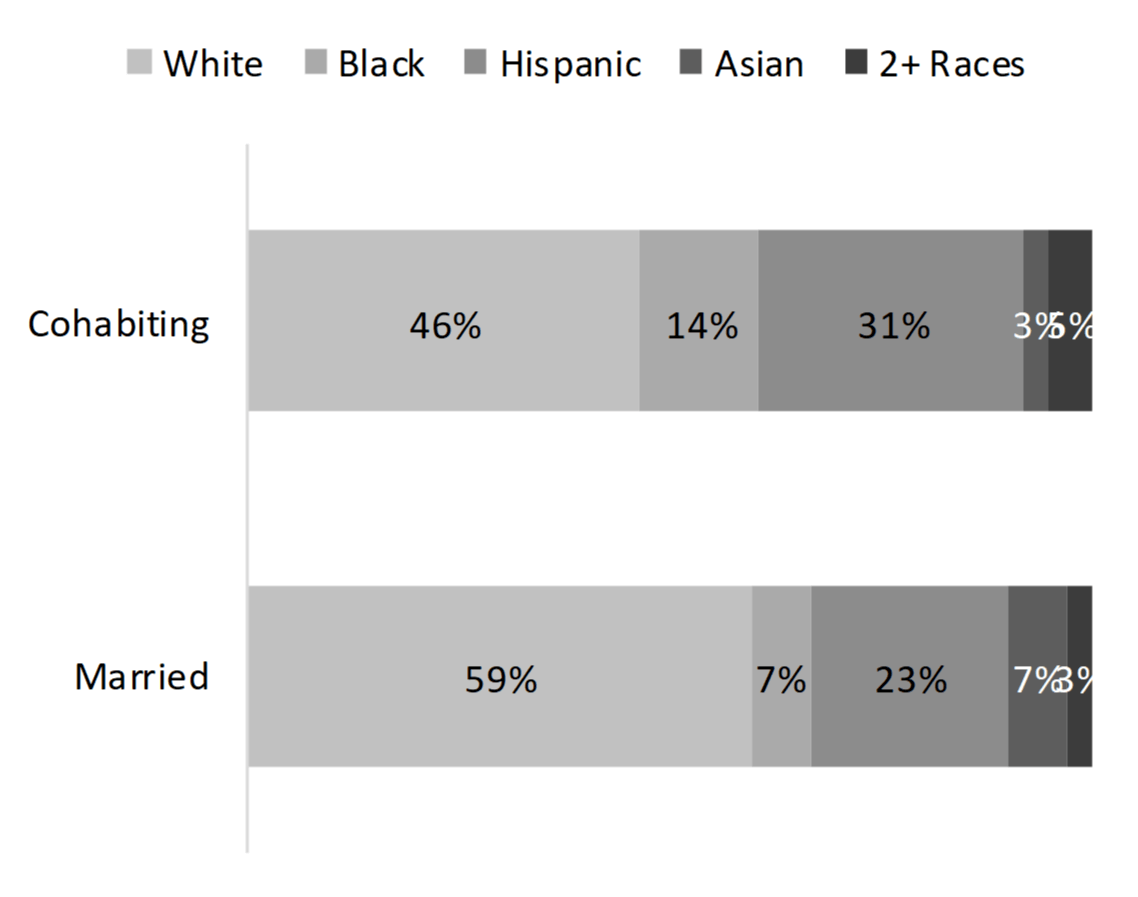
Measures of Poverty
- A large majority of children in married biological parent families were living above the official poverty line (91 %). About half (54%) of children living with cohabiting biological parents were classified as living above the official poverty line.
- Taking into account the income of both biological parents in cohabiting families and non-cash benefits (i.e., using the supplemental poverty measure represented by the dotted line) cuts the share of children with cohabiting parents living in poverty by almost half. However, these children were still not as financially secure as their counterparts with married parents.
Figure 4. Poverty (Official and Supplemental) Among Children in Two Biological Parent Families, 2016
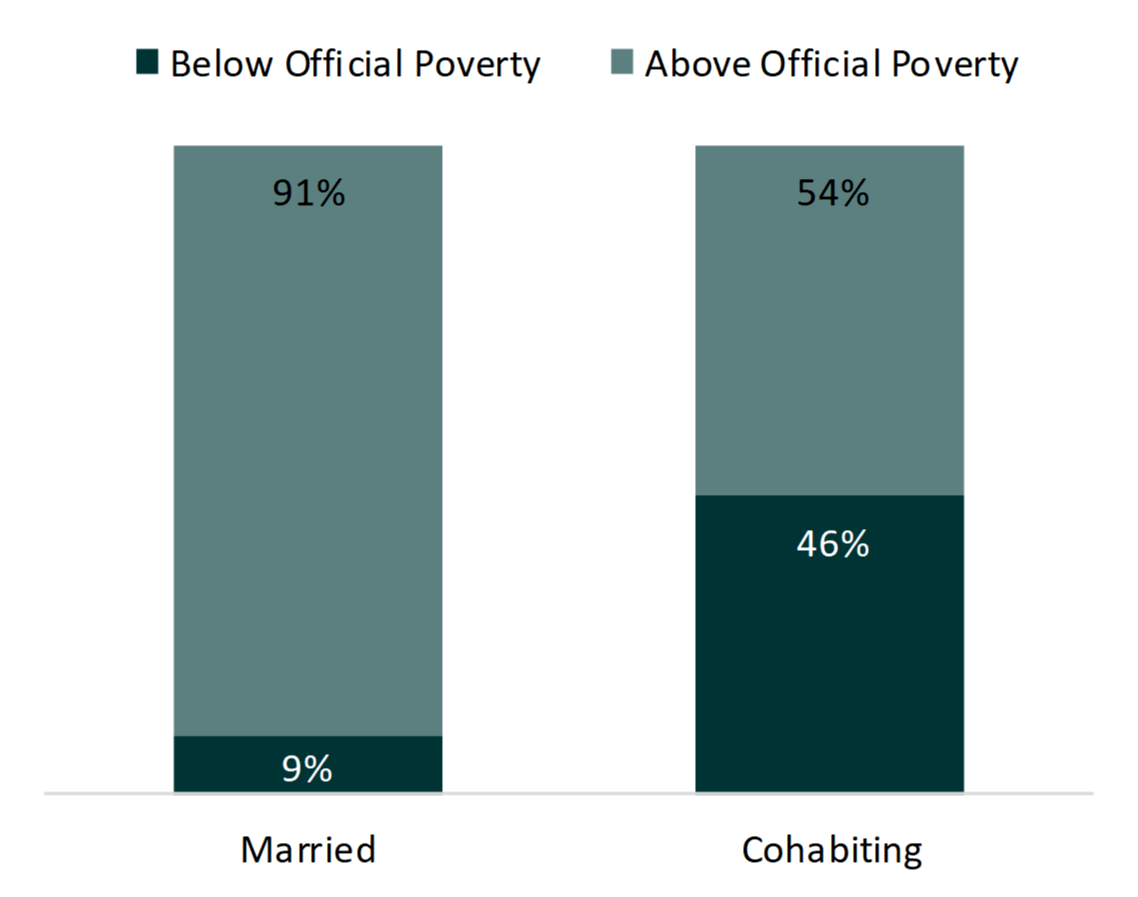
Health Insurance Coverage
- While the vast majority of all children living with two biological parents were insured, the share of uninsured children living with married biological parents (4%} was half that of children living with cohabiting biological parents (8%).
- The majority of children living with married twobiological parents were covered by private health insurance in 2016 (70%). In contrast, the majority of children in cohabiting families (58%) were covered by public health insurance.
Figure 5. Health Insurance Coverage Among Children in Two Biological Parent Families, 2016
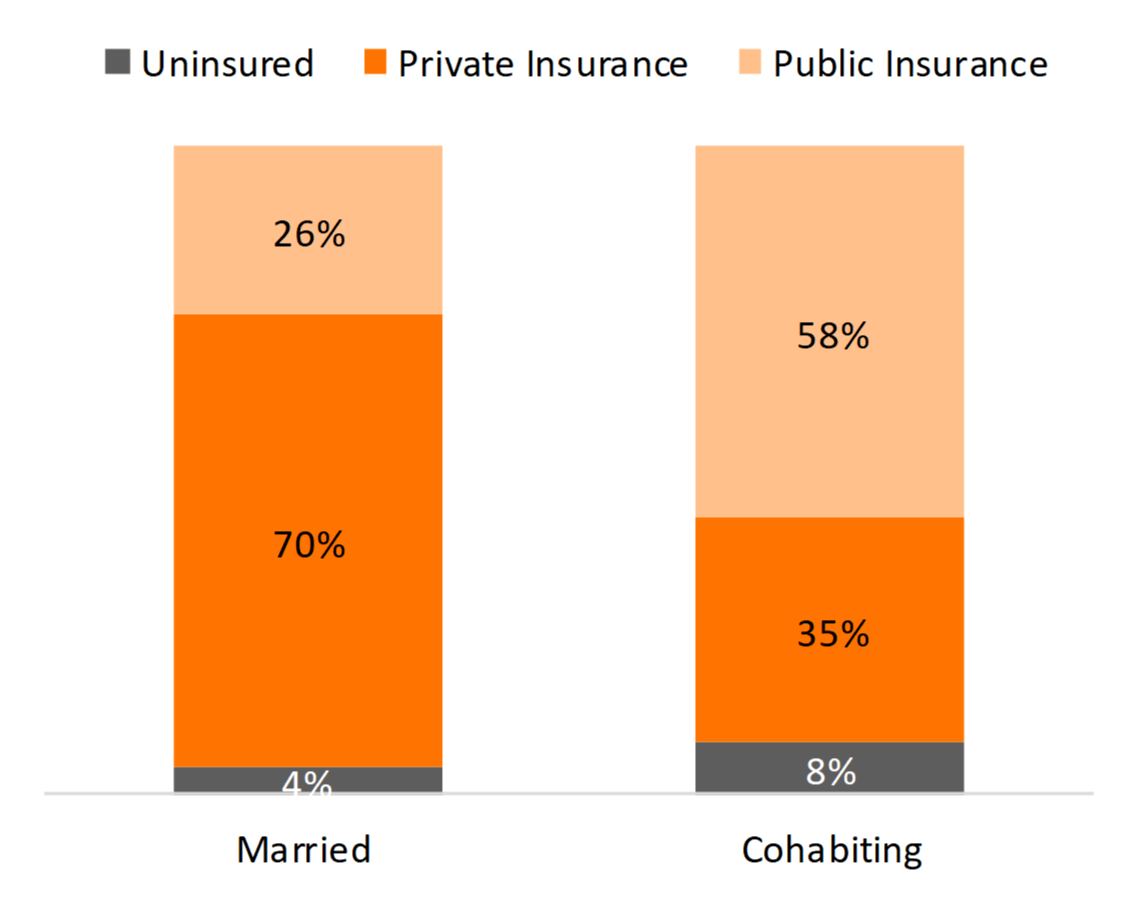
*For more information on the history of the poverty measure, please visit the United States Census Bureau's website link.
Data Sources
- Flood, S., King, M., Ruggles, S., and Warren, J.R. Integrated Public Use Microdata Series, Current Population Survey: Version 4.0 [dataset]. Minneapolis: University of Minnesota, 2015. http://doi.org/10.18128/D030.V4.0.
References
- Manning, W. D., Brown, S. L., & Stykes, J. B. (2014). Family complexity among children in the United States. The ANNALS of the American Academy of Political and Social Science, 654(1), 48-65. https://doi.org/10.1177 /0002716214524515
Suggested Citation
- Eickmeyer, K. J. (2017). American children's family structure: Two biological parent families. Family Profiles, FP-17-15. Bowling Green, OH: National Center for Family & Marriage Research. https://doi.org/10.25035/ncfmr/fp-17-15
Updated: 11/07/2025 03:28PM


